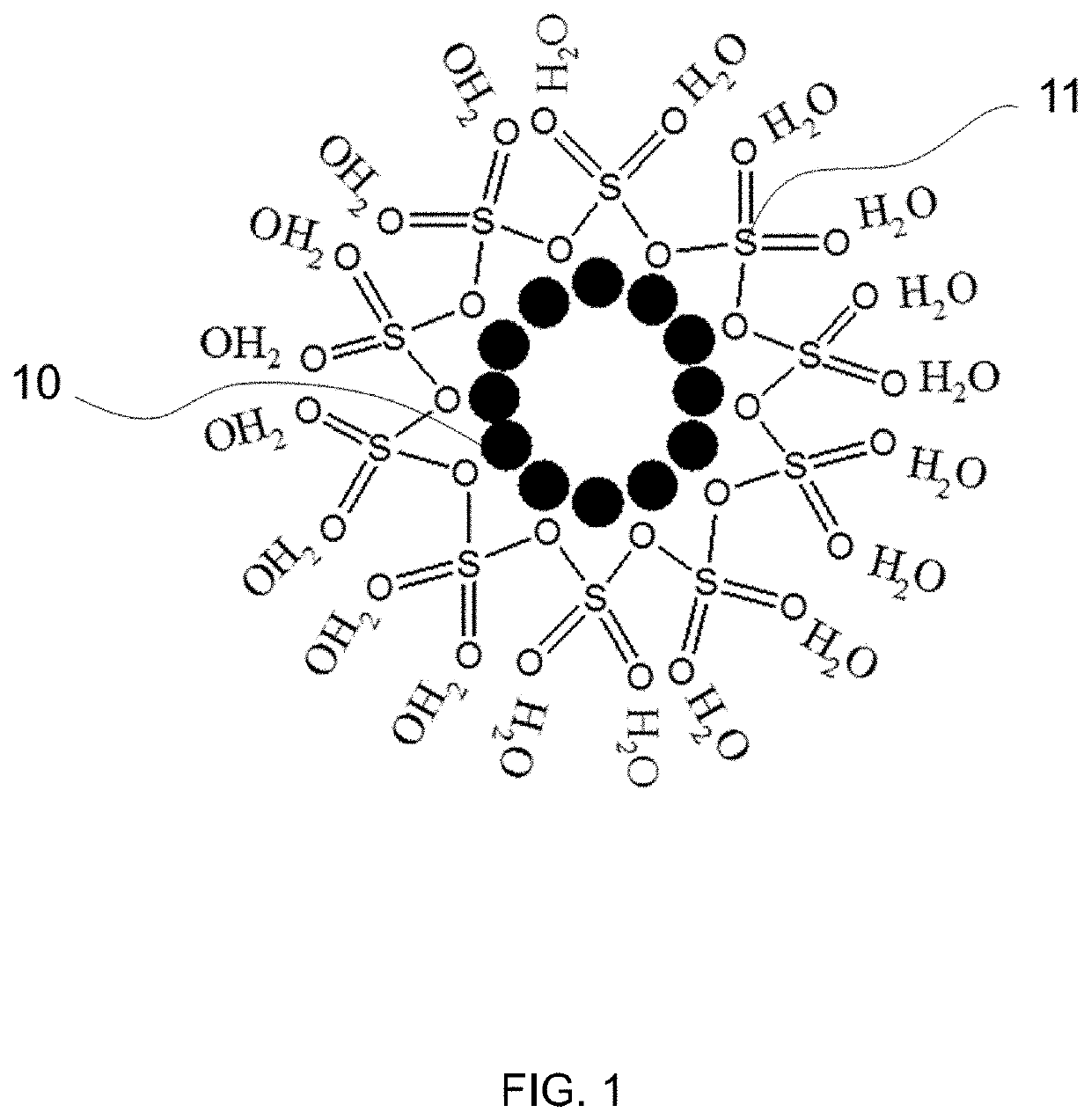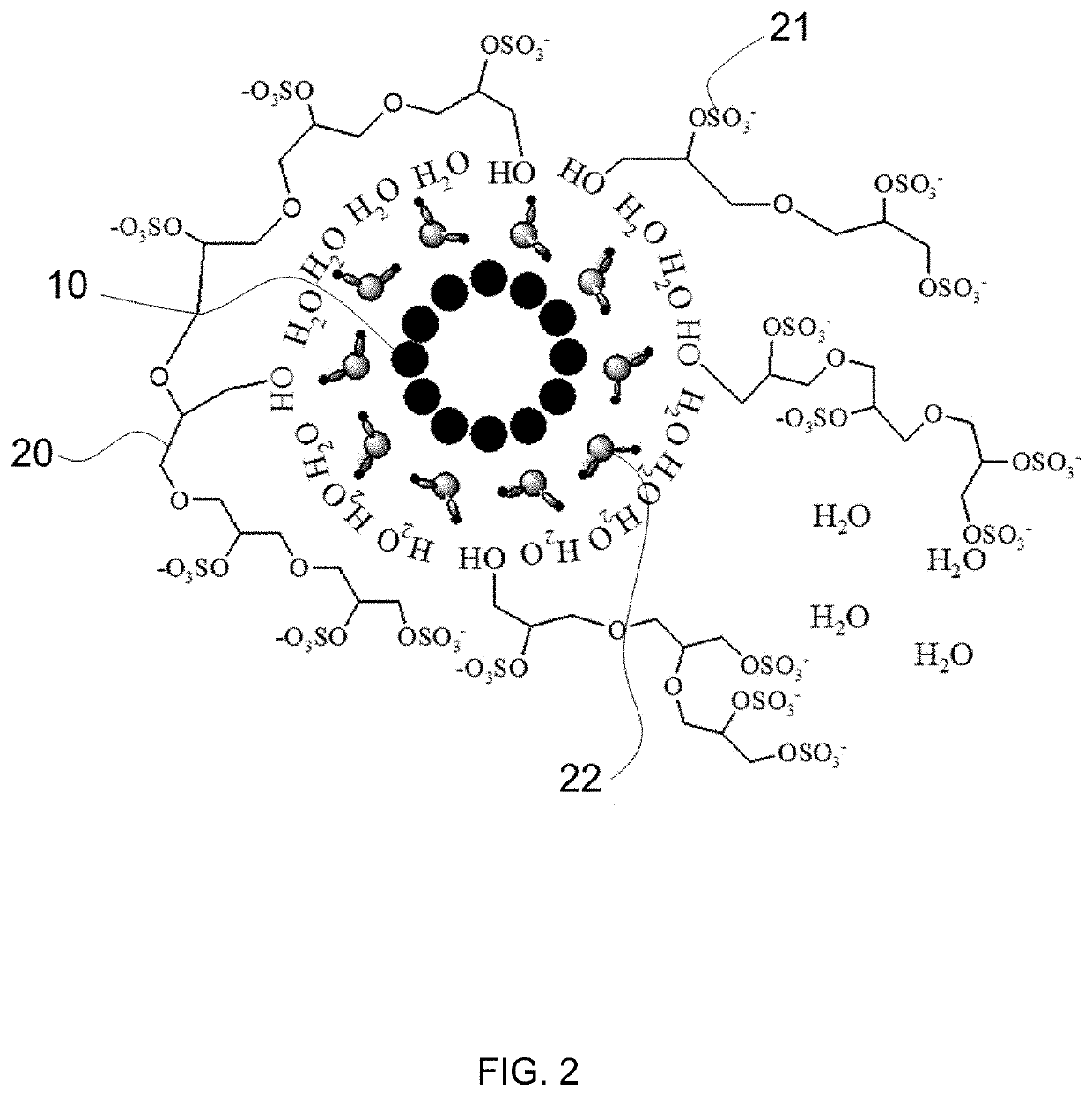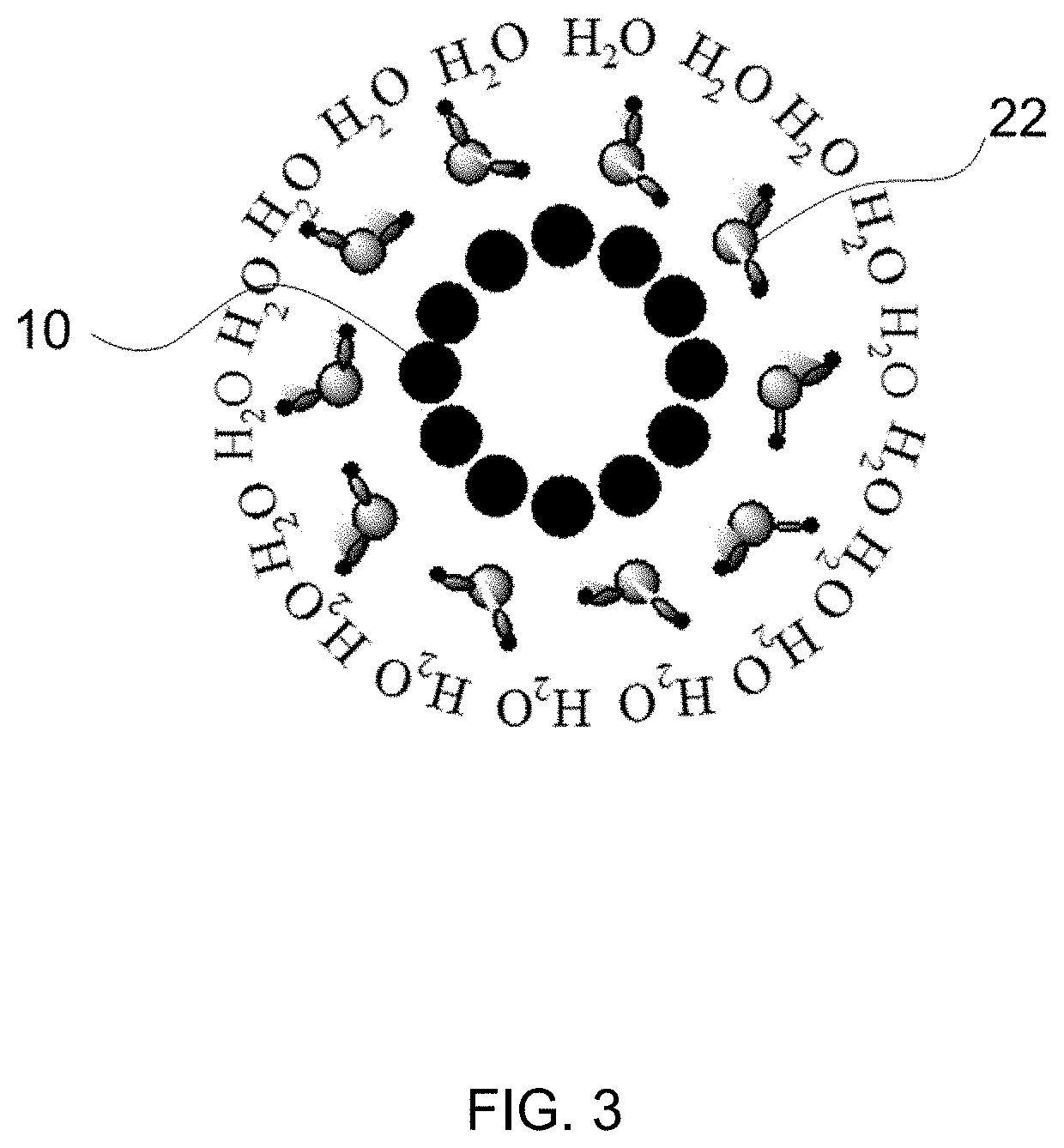Hydrophilic graphitic material
a graphite and hydrophilic technology, applied in the field of hydrophilic graphite materials, can solve the problems of increasing scarce fresh water available, reducing flux rates, and achieving high permeability
- Summary
- Abstract
- Description
- Claims
- Application Information
AI Technical Summary
Benefits of technology
Problems solved by technology
Method used
Image
Examples
example 1
Hydrophilicity Testing
[0055]Three CNT films were prepared: Sample 1 (e.g. FIG. 1), Sample 2 (e.g. FIG. 2), and Sample 3 (e.g. FIG. 3). Sample 1 was a CNT film with an SO3 polymer formed by treating the CNT film with SO3 triethyl amine complex at a temperature of 100° C. in vacuo for a period of time from 2 hours to 24 hours. Sample 2 was prepared by treating a CNT film with glycerol diglycidyl ether at a temperature of 90° C., for a period of 1 hour to 24 hours, followed by rinsing with methanol and water to remove excess reagent. The treated CNT film was then air dried and then treated with an excess amount of SO3 triethyl amine complex at temperature between 25° C. and 150° C. for a period of time from a few hours to 24 hours in vacuo. Upon the completion of the reaction, the CNT film (Sample 2) was rinsed thoroughly with deionized (DI) water and placed on aluminum foil to dry in air at ambient temperature before hydrophilicity testing. Sample 3 was an unmodified CNT film.
[0056]Al...
example 2
Water Permeation Testing
[0058]Unmodified CNT films are typically impermeable to water under moderate pressure. A CNT film coupon (˜2.0 mg, 25 mm in diameter) was placed in a Millipore stainless steel syringe filter holder, which was attached to a polypropylene syringe. The syringe plunger was pressed with both hands and no permeation of water could be observed.
[0059]Treating unmodified CNT film with water alone is not effective in improving water permeation. For example, a CNT film coupon (˜2.0 mg, 25 mm in diameter) was placed in a vacuum chamber and was heated at 100° C. for 2 hours and deionized water was introduced to cover the coupon. After 24 hours, the vacuum was released and the CNT film was tested in a Millipore stainless steel syringe filter holder for water permeation as described above. A water flux of 1.20 g / min was obtained. Continued soaking of the CNT film in water did not increase the flux. Upon drying the CNT film in air for 3 days, the water flux dropped to <0.5 g...
PUM
| Property | Measurement | Unit |
|---|---|---|
| temperature | aaaaa | aaaaa |
| dielectric constant | aaaaa | aaaaa |
| dielectric constant | aaaaa | aaaaa |
Abstract
Description
Claims
Application Information
 Login to View More
Login to View More - R&D
- Intellectual Property
- Life Sciences
- Materials
- Tech Scout
- Unparalleled Data Quality
- Higher Quality Content
- 60% Fewer Hallucinations
Browse by: Latest US Patents, China's latest patents, Technical Efficacy Thesaurus, Application Domain, Technology Topic, Popular Technical Reports.
© 2025 PatSnap. All rights reserved.Legal|Privacy policy|Modern Slavery Act Transparency Statement|Sitemap|About US| Contact US: help@patsnap.com



